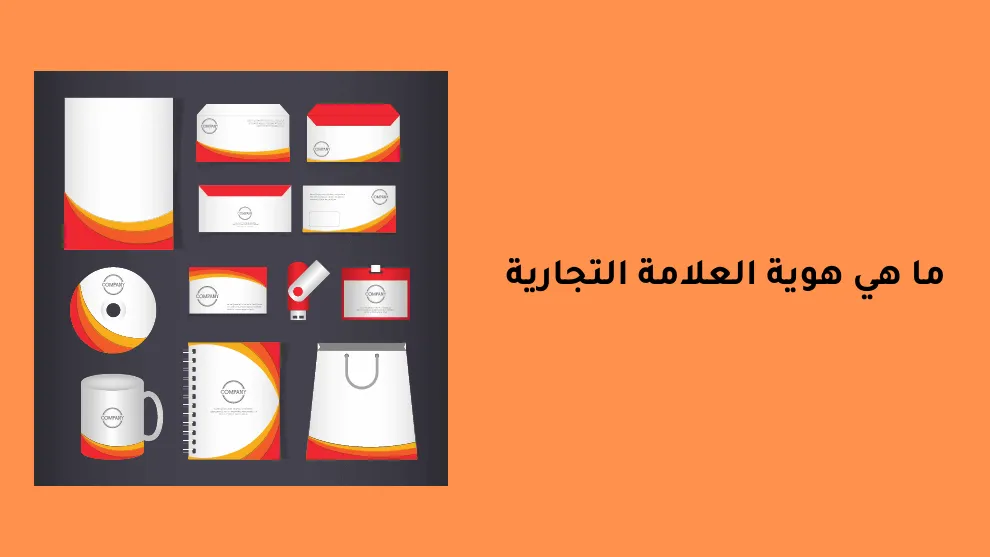Table of Contents:
Brand Visual Identity: The Foundation of Success in the Corporate World
Brand Visual identity is the element that distinguishes a brand from other brands in the market. It encompasses everything related to the visual appearance of the brand, such as the logo, colors, fonts, designs, and graphics that represent the company and are displayed across all communication channels, whether on products, websites, advertisements, or even other promotional materials.
Visual Identity for Companies

Visual Identity for Companies includes a set of visual elements that contribute to enhancing the overall image of the brand and help build a strong connection between the audience and the brand. This includes everything from the logo, colors, fonts, design patterns, graphics, to even the photography style and interactive media used to communicate with customers.
This identity is one of the most important tools in distinguishing a company in the market, as the first impression the audience has of your brand is often shaped by these visual elements. It is an integral part of the marketing strategy, as it helps in brand recall and strengthens its position in the consumer’s mind
Visual Identity in Design
In the field of design, visual identity is a tool used to unify all the visual designs related to the brand. This identity is created in a way that aligns with the values and goals the brand aims to achieve. For example, if the brand promotes eco-friendly or natural products, earth and nature colors such as green and brown may be chosen. On the other hand, if the brand promotes luxury products, darker colors and gold might be used.
Visual identity in design is not limited to just the logo or colors; it also includes fonts, interactive patterns, and the layout of promotional materials, creating a cohesive visual experience that consistently and strongly reflects the brand’s identity.
The difference between visual identity and branding
Some may think that visual identity and branding are the same thing, but there is a fundamental difference between them:
Visual identity: As mentioned, it is the visual element that represents the brand, including the logo, colors, fonts, and graphics that distinguish it.

Branding: It certainly includes visual identity, but it is broader in scope. Branding encompasses the entire identity of the company, including the brand’s values, mission, vision, and personality. It also includes the emotional relationships and the experience the customer has with the product or service. In other words, visual identity is a part of branding that helps convey its message visually.
The Importance of Visual Identity for a Brand
Visual identity plays a crucial role in establishing a strong and lasting relationship with the audience. Here are the key reasons highlighting its importance:
Quick Recognition and Differentiation: A visual identity makes it easy for customers to recognize the brand and distinguish it from competitors.
Building Trust: A well-crafted and professional visual identity reflects the company’s professionalism, helping to build customer trust.
Emotional Engagement: Visual identity can evoke certain emotions in customers. For example, bright colors may create a sense of happiness or optimism, while dark colors may suggest luxury and elegance.
Consistency and Expansion: A strong and sustainable visual identity helps in expanding and growing into new markets without the need to change the overall brand appearance, facilitating international expansion or entry into new markets.
Recall and Loyalty: A consistent visual identity helps customers easily remember the brand, contributing to stronger brand loyalty.
Elements of Visual Identity and Their Impact on the Brand
Visual Identity for a Brand
| Visual Element | Details | Impact on the Brand |
|---|---|---|
| Logo | The logo is a symbol or design that reflects the brand’s identity and is unique and easily recognizable. | The logo is the brand’s visual face and is used to identify and differentiate the brand in the market. |
| Colors | The colors chosen for the brand help convey the emotional and aesthetic message of the brand. | Colors influence the psychological impressions of the audience and help create an emotional connection with customers. |
| Typography | The choice of appropriate fonts includes the type and size of the fonts used in all brand visuals. | Fonts contribute to readability and reflect the brand’s personality (formal, modern, etc.). |
| Images and Graphics | The images and graphics used should be consistent with the brand’s identity and effectively communicate its message. | Images and graphics strengthen the visual message and clarify the brand’s products or services. |
| Patterns and Symbols | Patterns such as lines or geometric shapes, and symbols that may be associated with the brand. | Symbols and patterns enhance the brand’s recognition in the customer’s visual memory. |
| Integrated Design | Coordinating all visual elements uniformly across platforms (website, advertising campaigns, packaging). | Integrated design helps create a professional and consistent image of the brand across all channels. |
| Packaging | Packaging that reflects the brand’s identity and is consistent with colors and the logo. | Packaging impacts the customer experience and enhances differentiation in a market filled with similar products. |
| Interactive Patterns (UI/UX) | Interactive design elements on the website or app, such as buttons, menus, and animations. | UI/UX design improves customer interaction and satisfaction with the brand. |
Conclusion
The visual identity of a brand is one of the essential factors that contribute to building and solidifying the company’s presence in the market. It is not limited to just the logo or colors, but includes all visual elements that help communicate the brand’s message to the audience. The importance of this identity extends beyond differentiating from competitors; it goes further to build an emotional connection with customers, facilitate brand recognition, and ultimately increase business opportunities.
It is crucial for the visual identity to maintain a consistent appearance. Any change in visual elements can affect how customers interact with the brand, so it is important to develop this identity with great care to ensure the best possible results in the market.
Ways to Contact Us
Through WhatsApp Facebook or Instagram
Related Articles:




